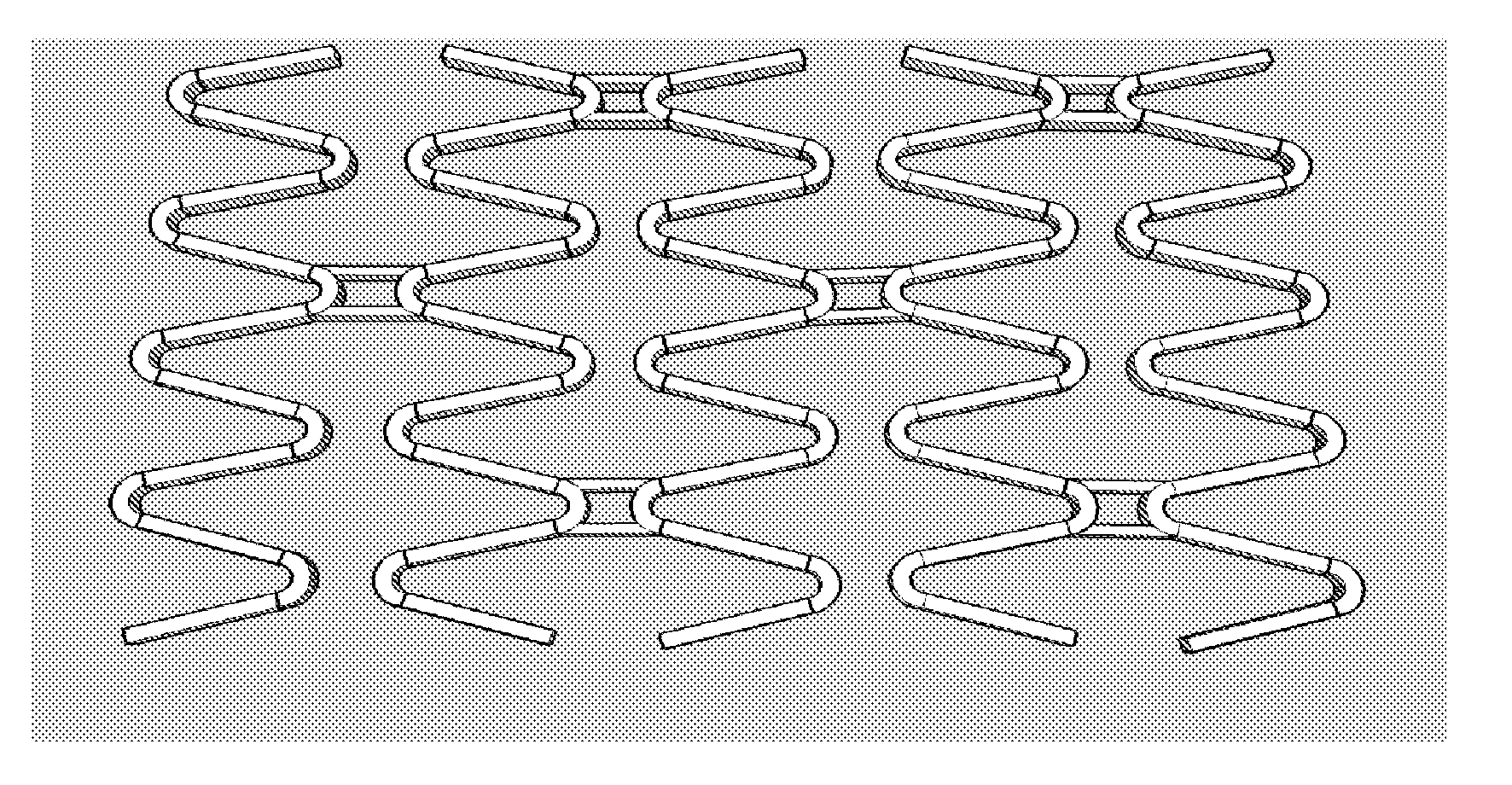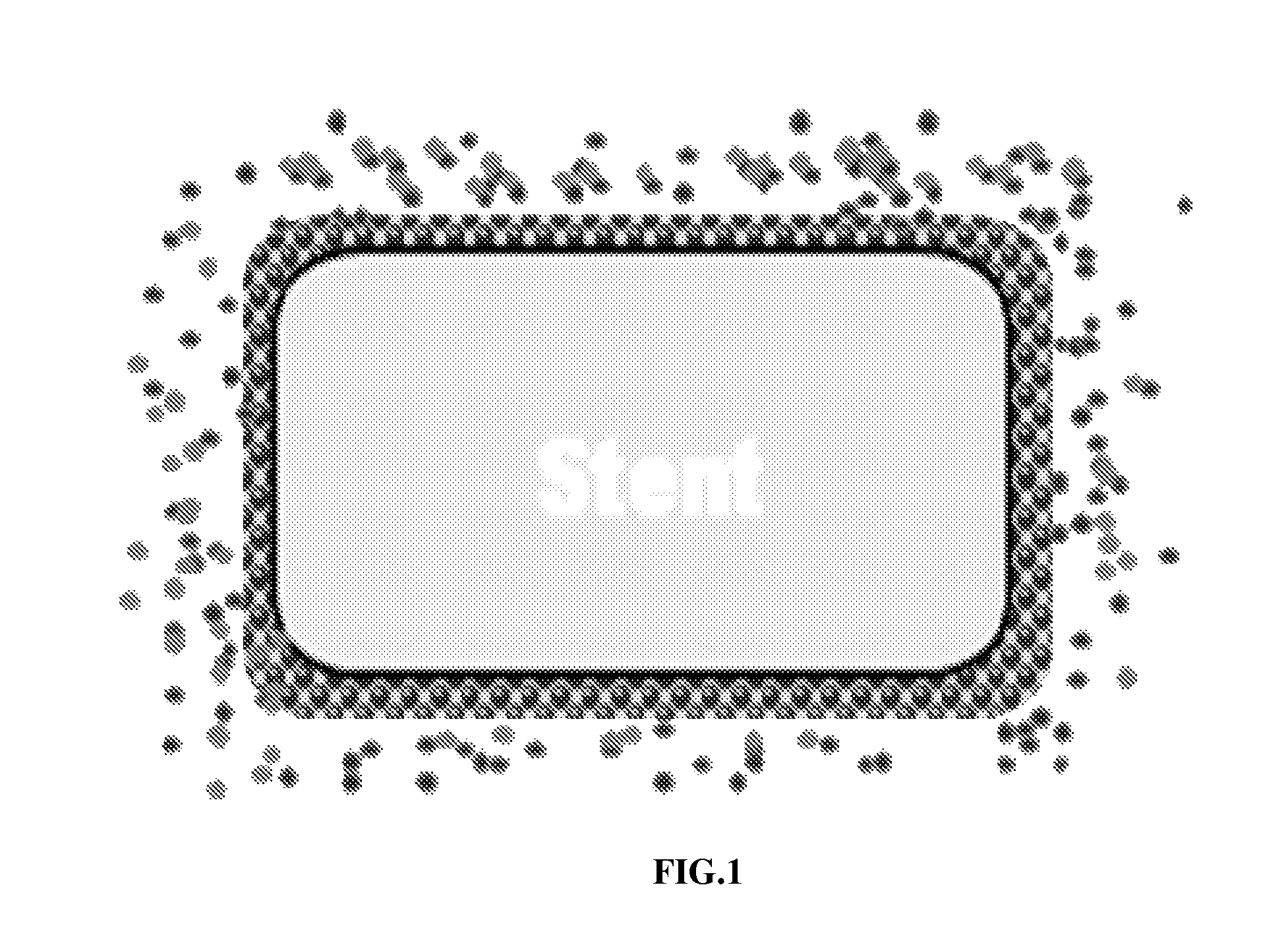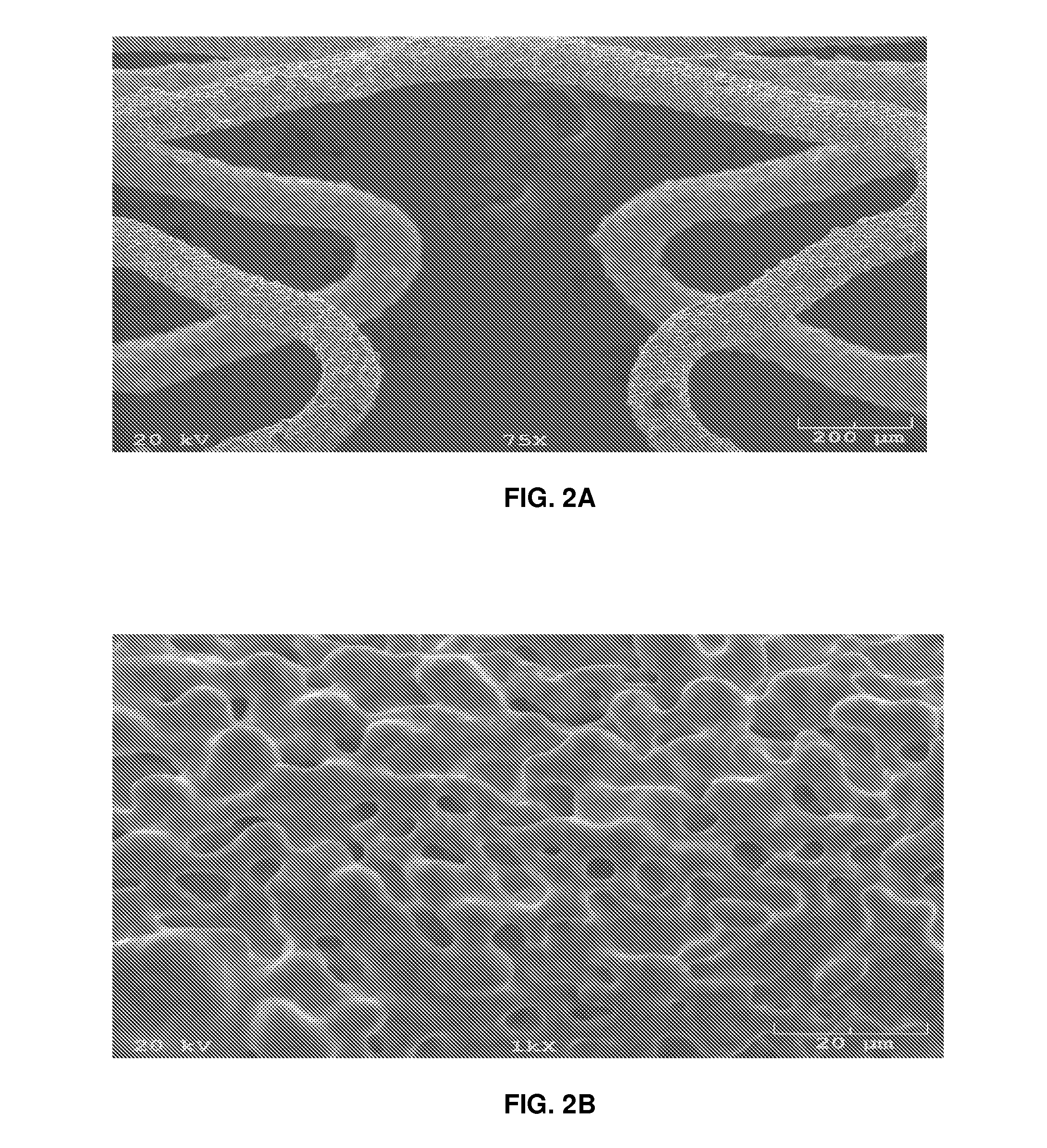Matrix Coated Stent
a stent and matrix technology, applied in the field of stents, can solve the problems of lesion thrombosis, proliferation and migration of vascular endothelial cells, and the walls of the vessel are swollen, and achieve the effect of promoting the endothelialization of the vessel lining membran
- Summary
- Abstract
- Description
- Claims
- Application Information
AI Technical Summary
Benefits of technology
Problems solved by technology
Method used
Image
Examples
experiment # 1
Experiment #1
[0054]Seven 3.0 millimeter×14.3 millimeter cobalt chromium stents were processed as described above with a mask covering the lumen of the stent and having three coats to the abluminal surface and sides of the struts. The stents were baked under hydrogen vacuum for six hours and allowed to cool. The stents were then ultrasonic cleaned in acetone and allowed to dry. The stents were plasma cleaned prior to application of the drug formulation. Plasma cleaning involves the removal of impurities and contaminants from surfaces through the use of an energetic gaseous species such as argon and oxygen, as well as mixtures such as air and hydrogen / nitrogen are used. The plasma is created by using high radio-frequency to ionize a low pressure gas (usually 13.56 Mhz). The pressures of the gaseous species are typically below 1 Torr. The energetic, ionic species react with species on the surface of the stent, often producing gaseous products which can be removed by a vacuum system. Th...
experiment # 2
Experiment #2
[0057]Eight 3.0 millimeter×14.3 millimeter cobalt chromium stents were processed as described above without a mask covering the lumen of the stent and having all of the stent surfaces available for coating. The stents were baked under hydrogen vacuum for six hours and allowed to cool. The stents were then ultrasonic cleaned in acetone and allowed to dry. The stents were plasma cleaned prior to application of the drug formulation. Plasma cleaning involves the removal of impurities and contaminants from surfaces through the use of an energetic gaseous species such as argon and oxygen, as well as mixtures such as air and hydrogen / nitrogen are used. The plasma is created by using high radio-frequency to ionize a low pressure gas (usually 13.56 Mhz). The pressures of the gaseous species are typically below 1 Torr. The energetic, ionic species react with species on the surface of the stent, often producing gaseous products which can be removed by a vacuum system. The energeti...
PUM
 Login to View More
Login to View More Abstract
Description
Claims
Application Information
 Login to View More
Login to View More - R&D
- Intellectual Property
- Life Sciences
- Materials
- Tech Scout
- Unparalleled Data Quality
- Higher Quality Content
- 60% Fewer Hallucinations
Browse by: Latest US Patents, China's latest patents, Technical Efficacy Thesaurus, Application Domain, Technology Topic, Popular Technical Reports.
© 2025 PatSnap. All rights reserved.Legal|Privacy policy|Modern Slavery Act Transparency Statement|Sitemap|About US| Contact US: help@patsnap.com



